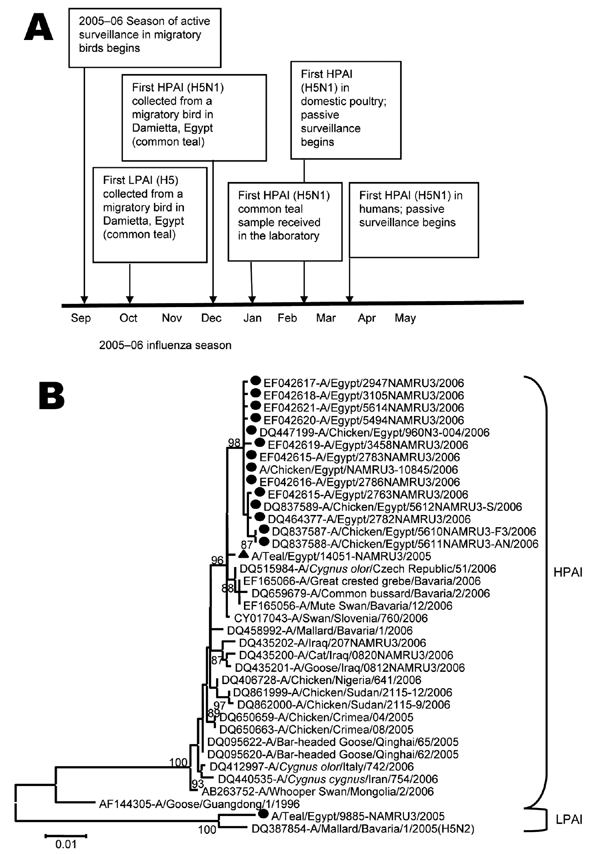Volume 13, Number 7—July 2007
Letter
Possible Avian Influenza (H5N1) from Migratory Bird, Egypt
Appendix Figure

Appendix Figure. A) Timeline of events of influenza A (H5N1) in migratory birds, domestic poultry, and humans, Egypt, September 2005-May 2006. HPAI, highly pathogenic avian influenza; LPAI, low pathogenic avian influenza. B) Phylogenetic neighbor-joining tree of the hemagglutin gene (1,596 bp) from influenza A virus (H5N1) strains from Egypt and closely related strains from GenBank. GenBank strains are indicated by GenBank numbers. Circles indicate strains from Egypt. Triangle indicates the HPAI (H5N1) teal strain identified in this study. Bootstrap support values (500 replicates) are indicated at each node. Scale bar indicates genetic distance expressed as number of substitutions per site. NAMRU3, Naval Medical Research Unit No. 3.
Page created: June 24, 2010
Page updated: June 24, 2010
Page reviewed: June 24, 2010
The conclusions, findings, and opinions expressed by authors contributing to this journal do not necessarily reflect the official position of the U.S. Department of Health and Human Services, the Public Health Service, the Centers for Disease Control and Prevention, or the authors' affiliated institutions. Use of trade names is for identification only and does not imply endorsement by any of the groups named above.